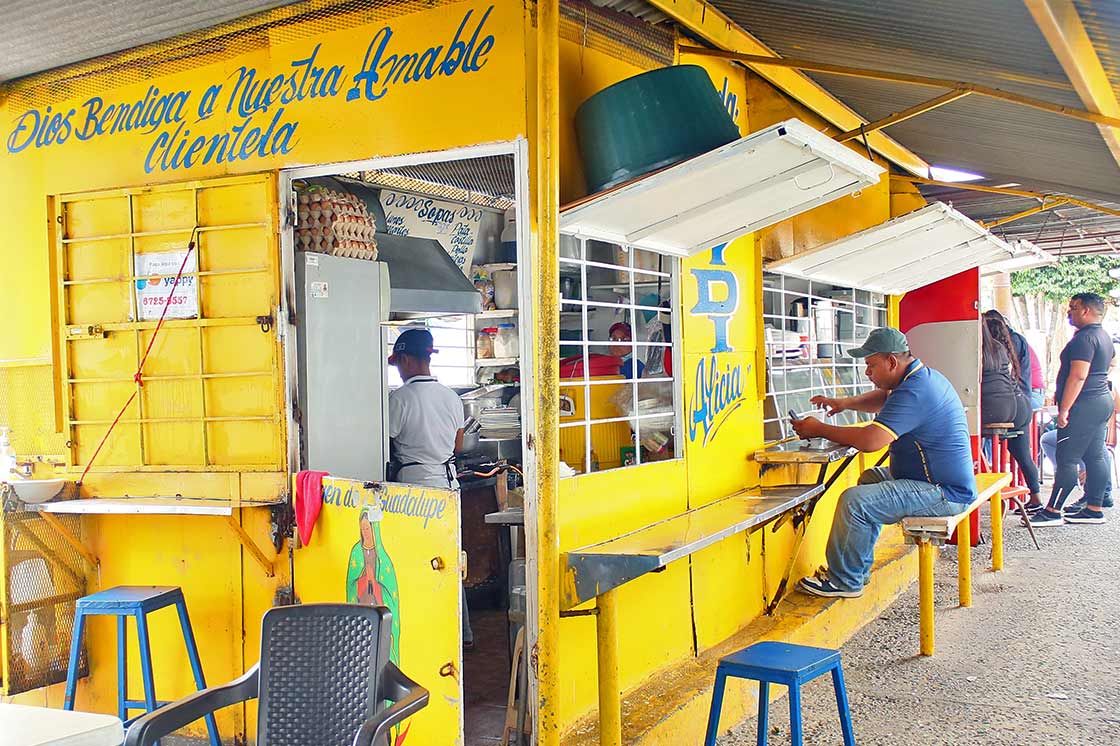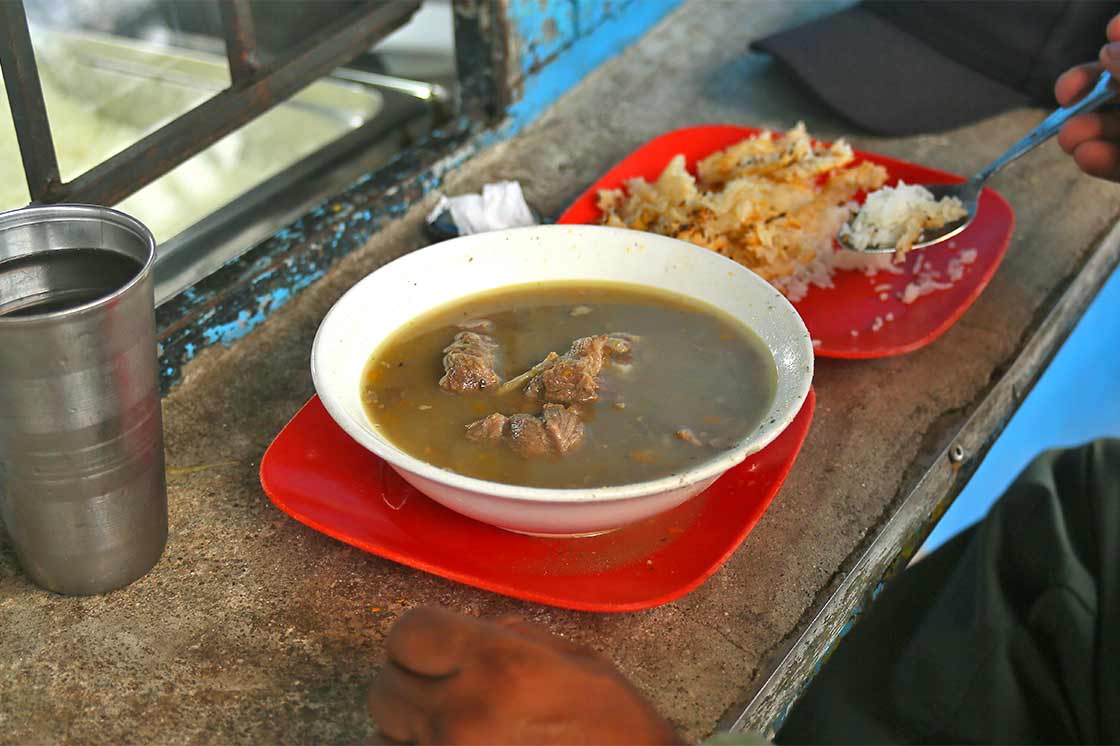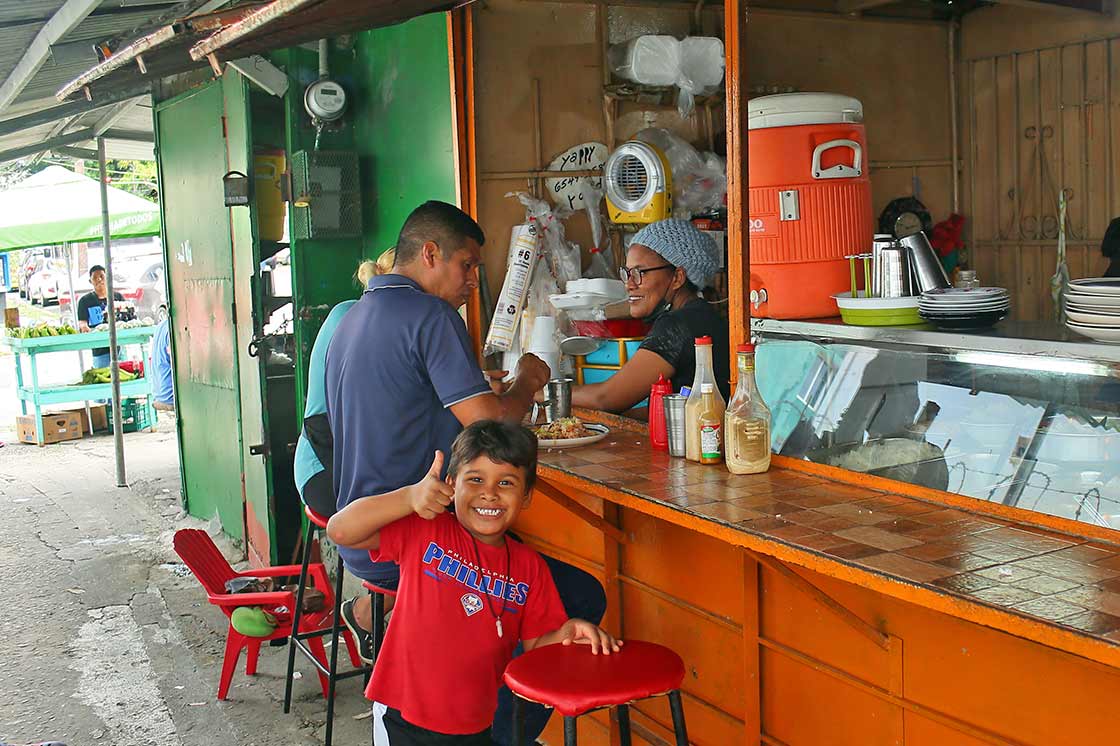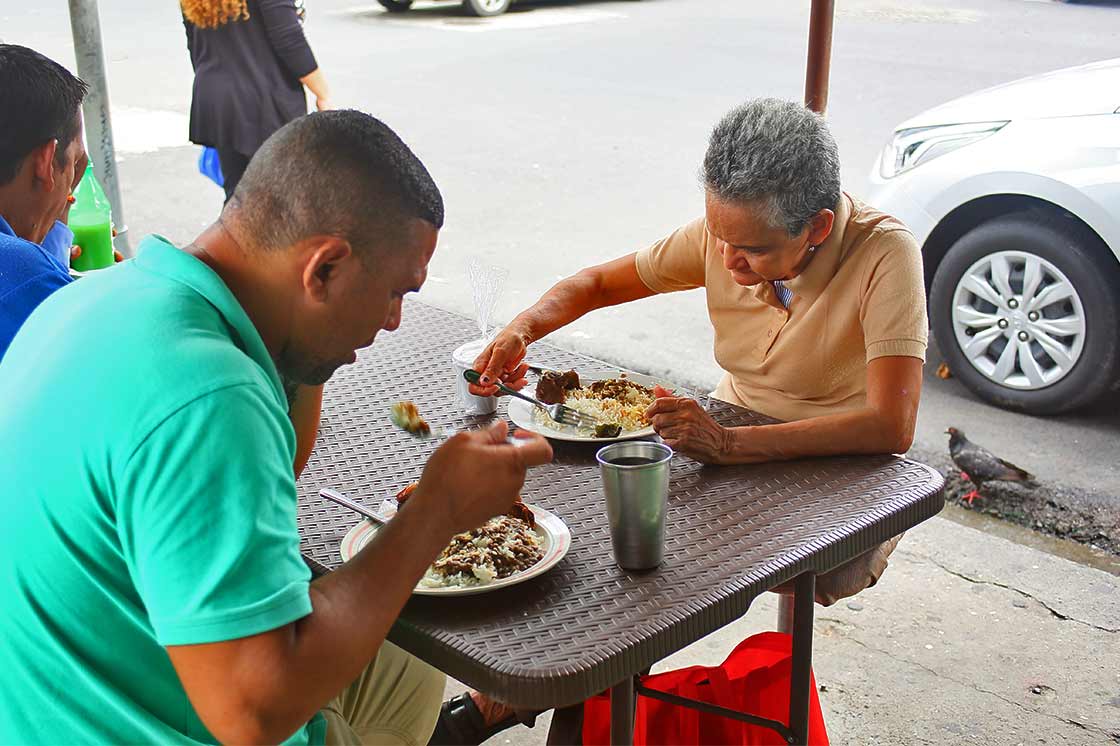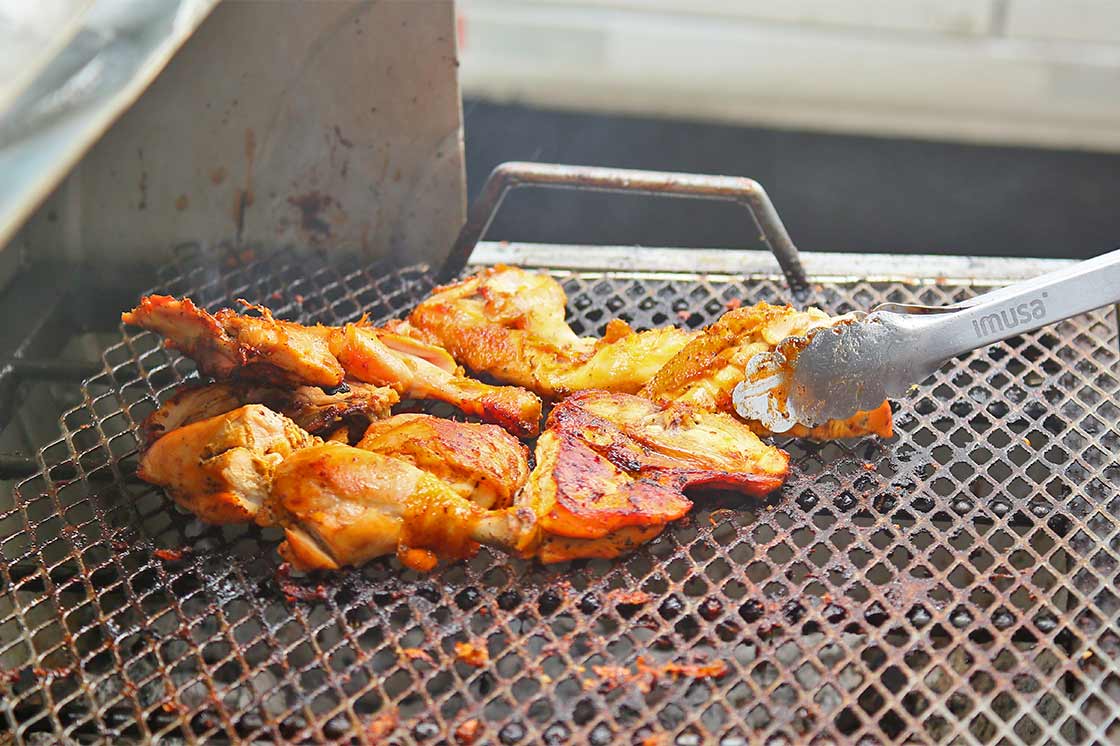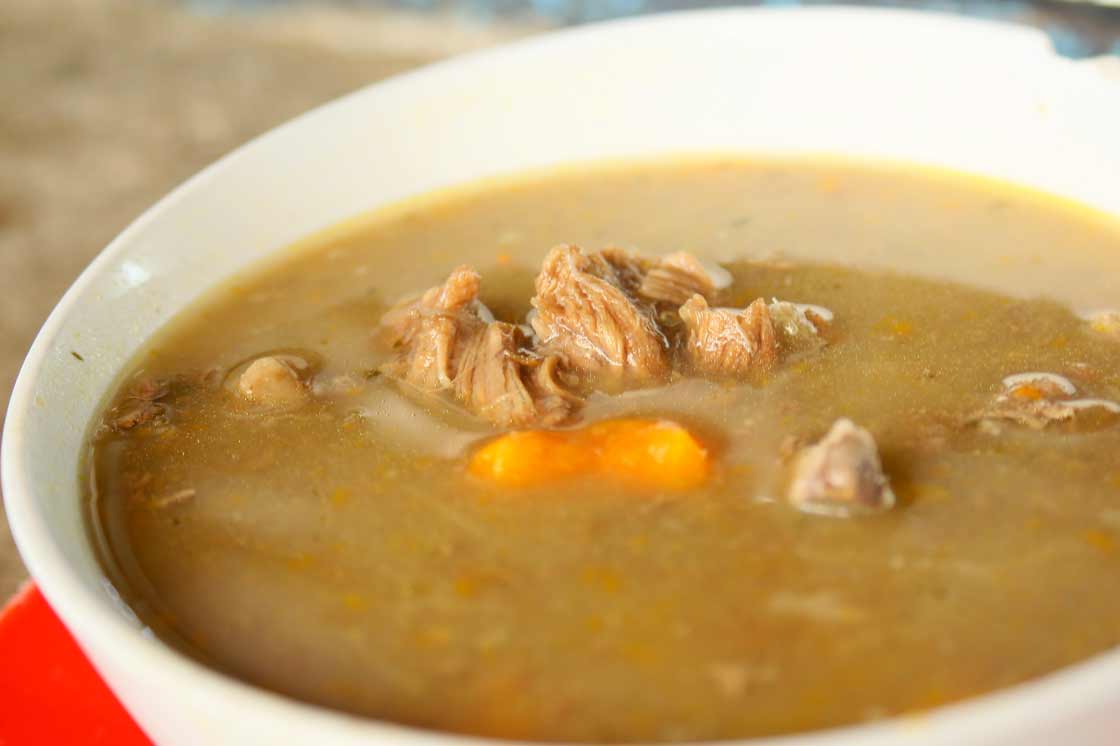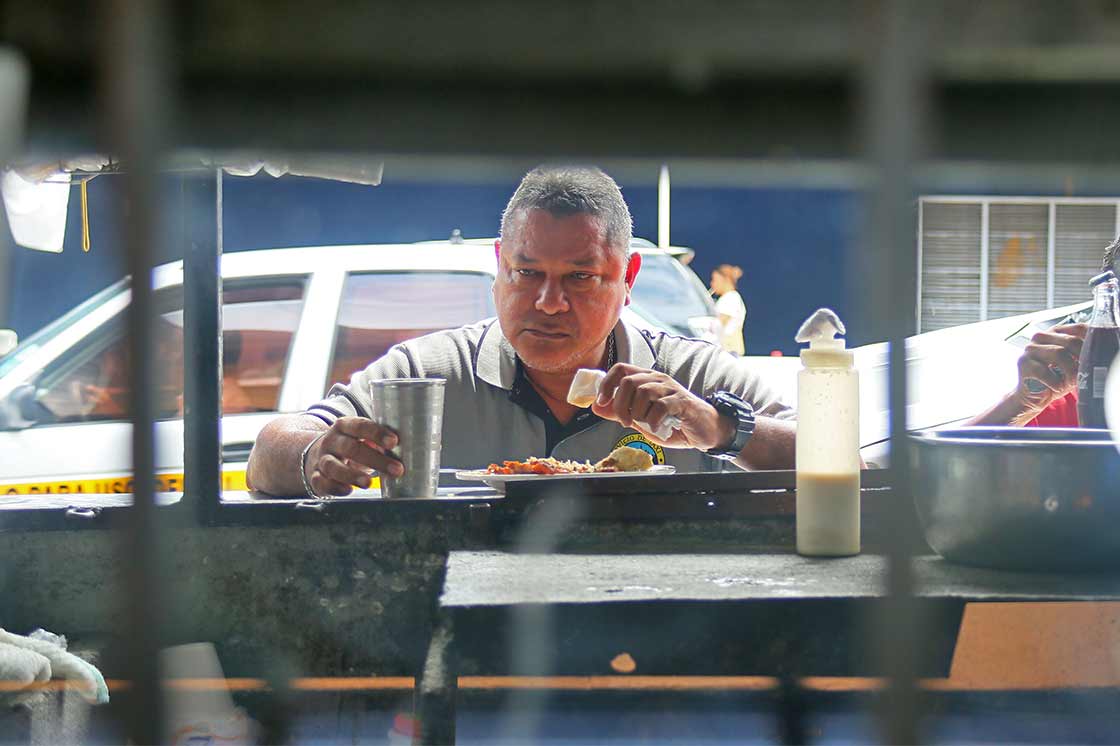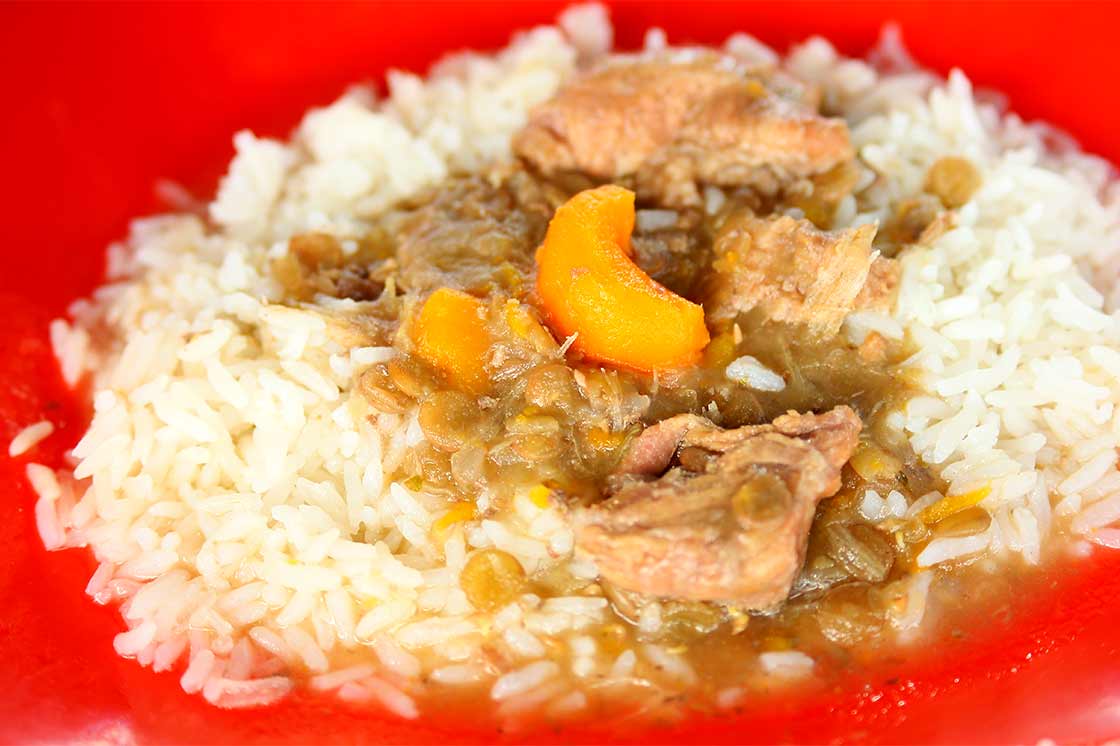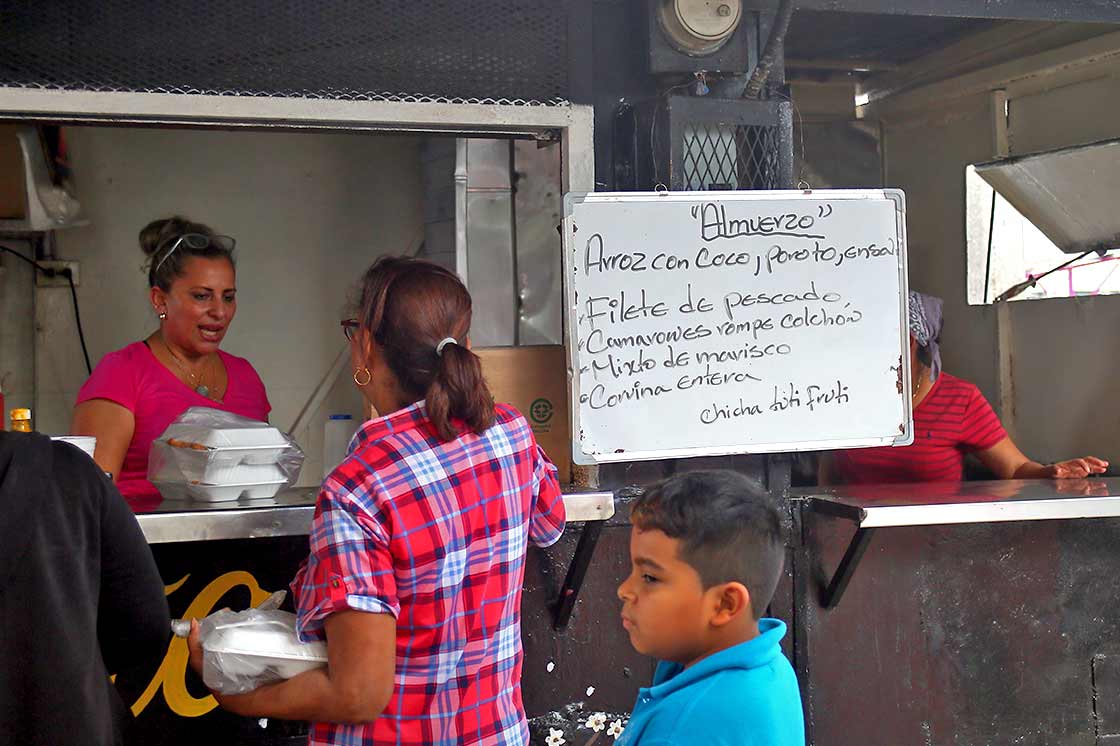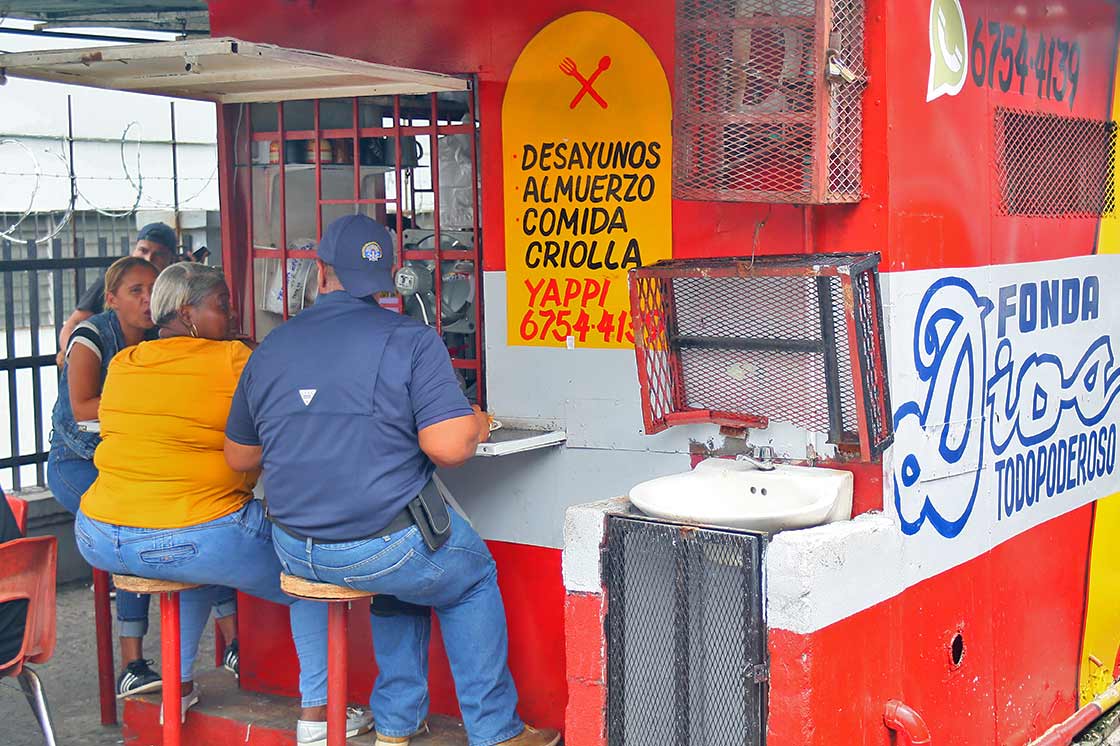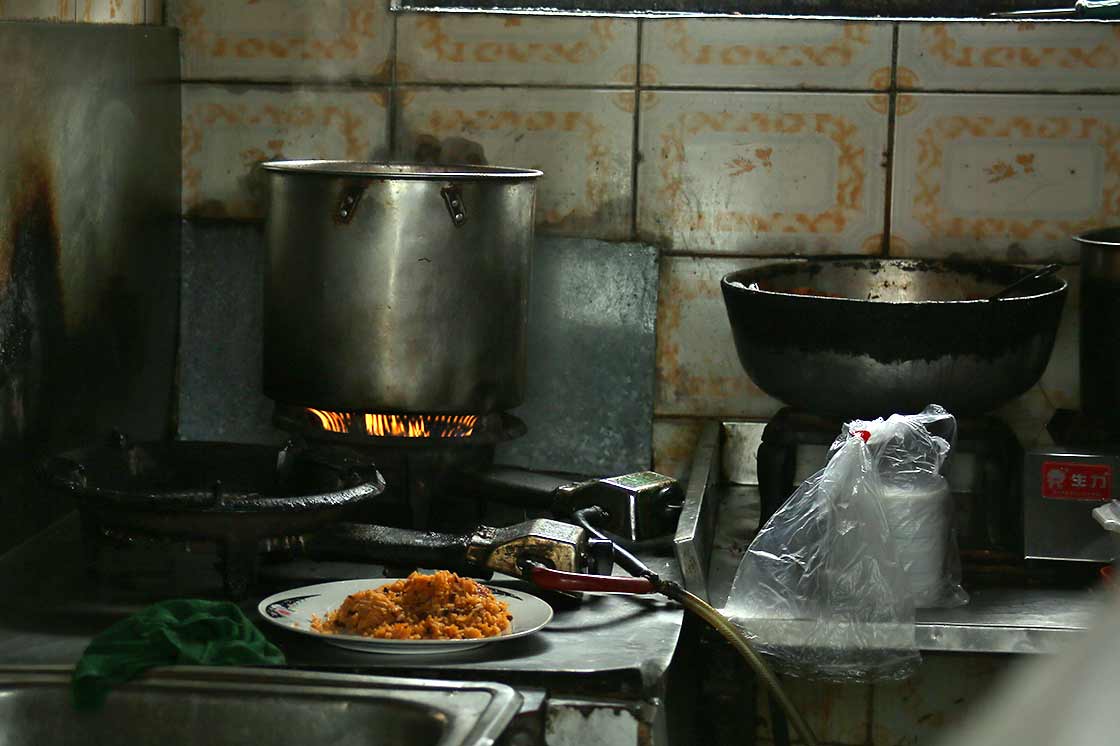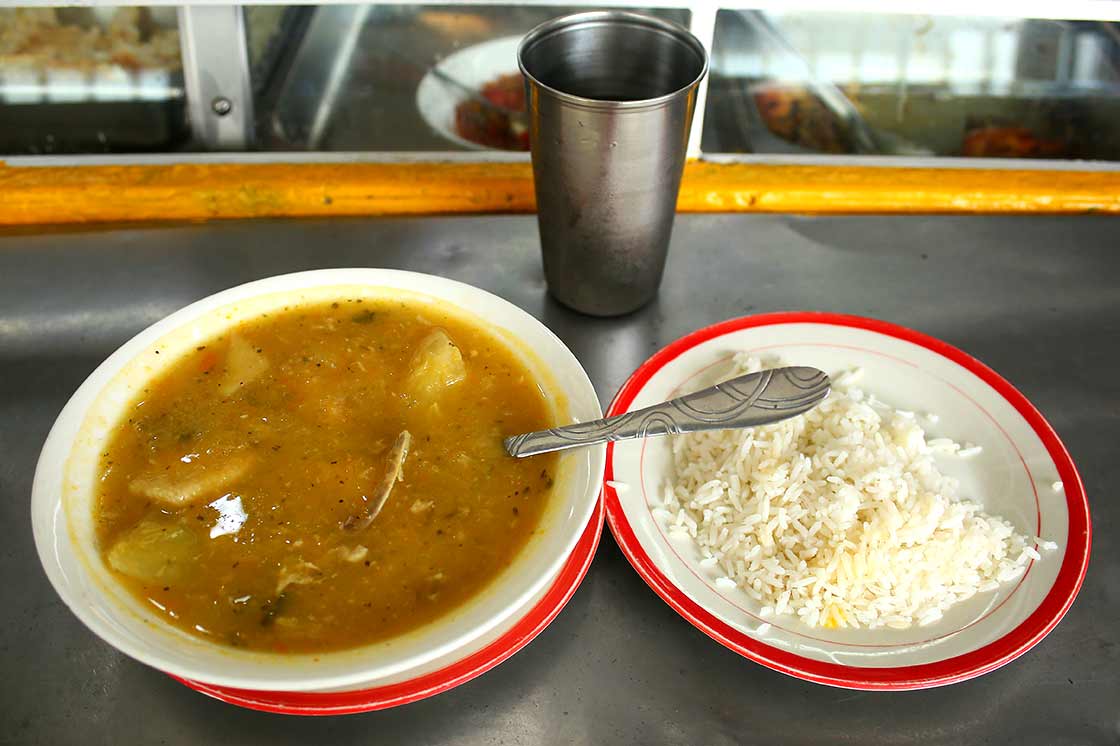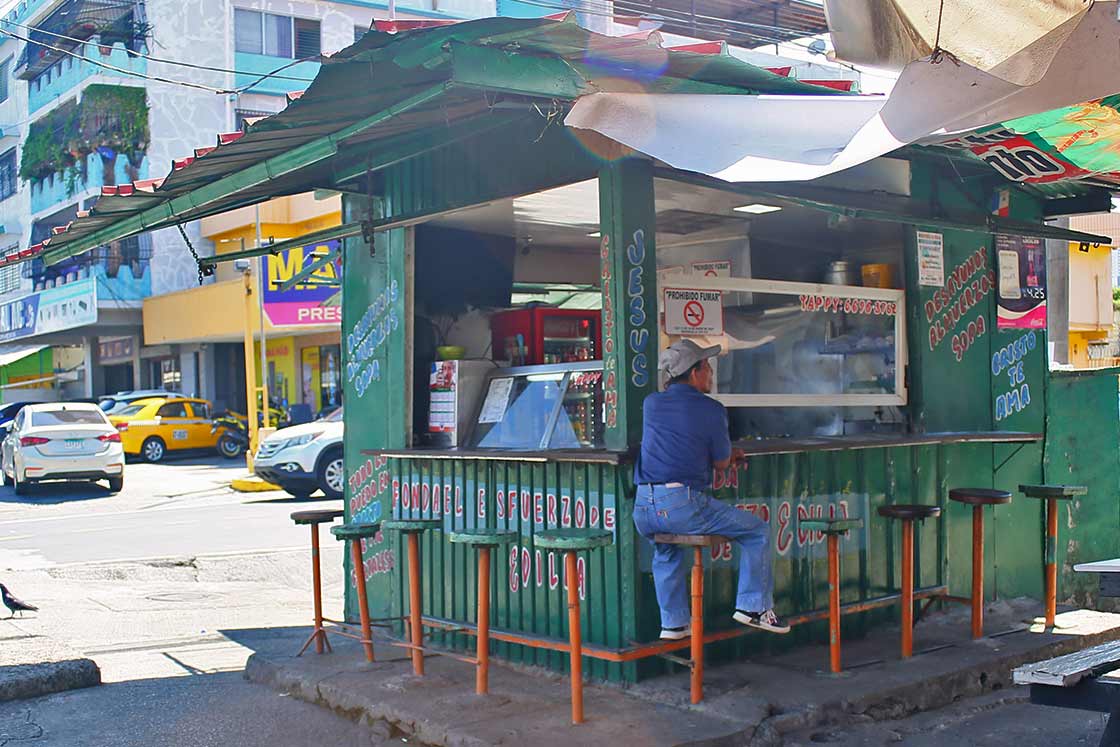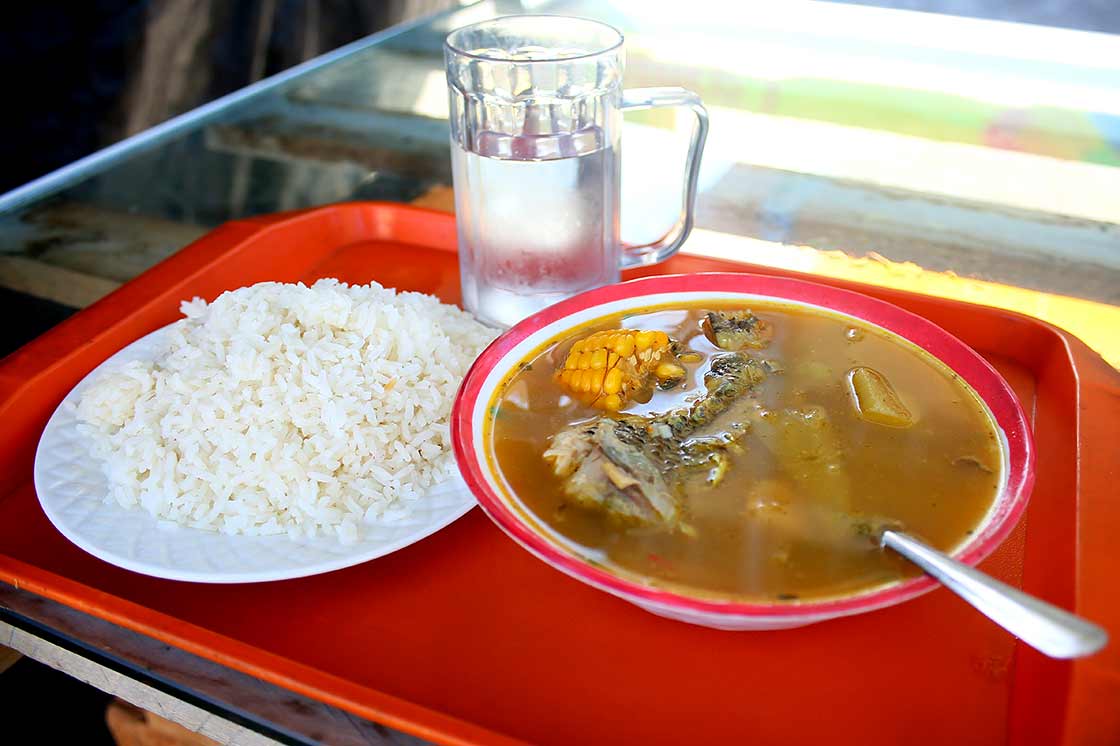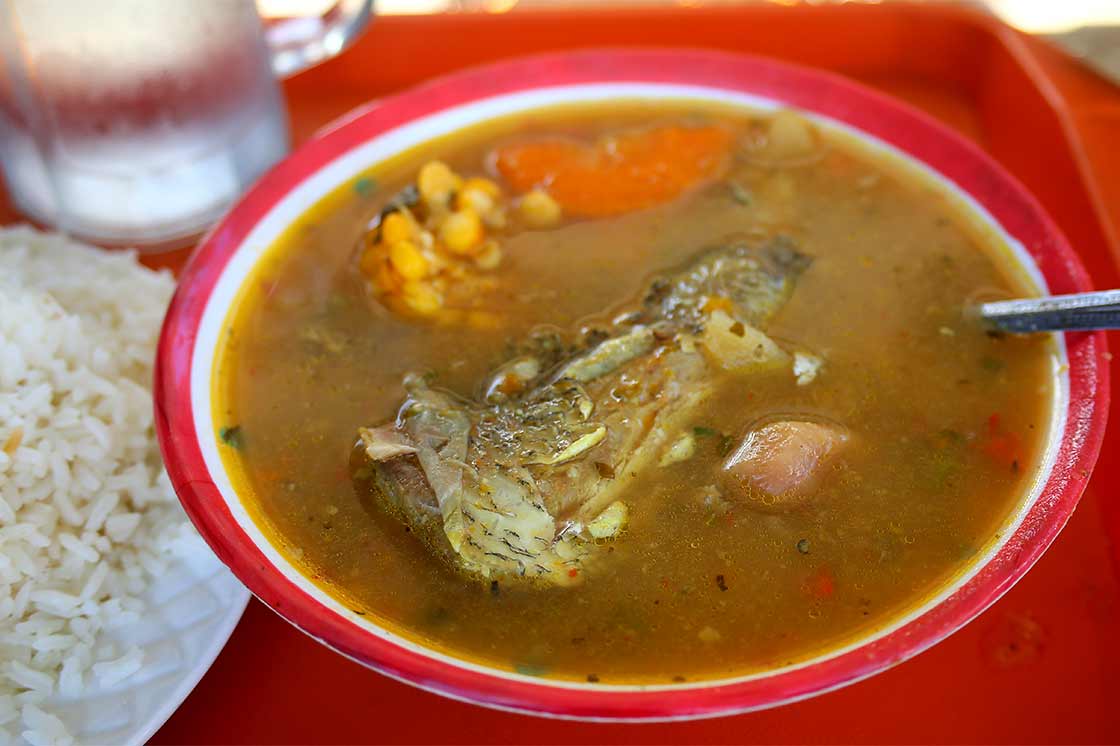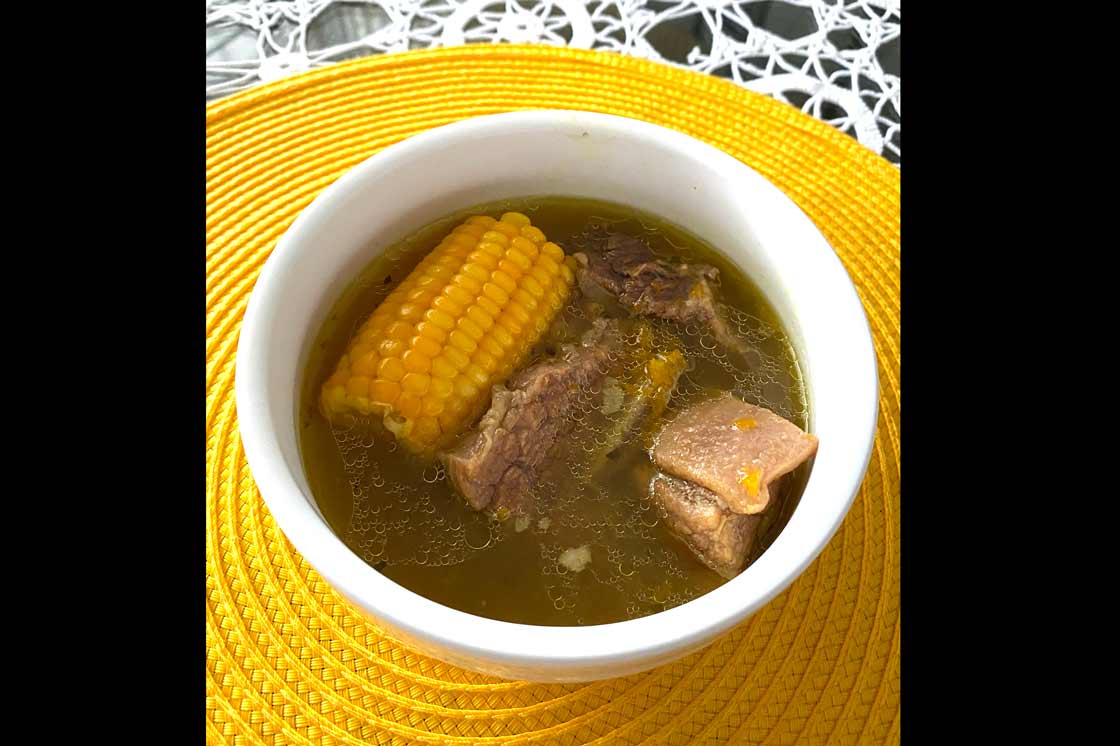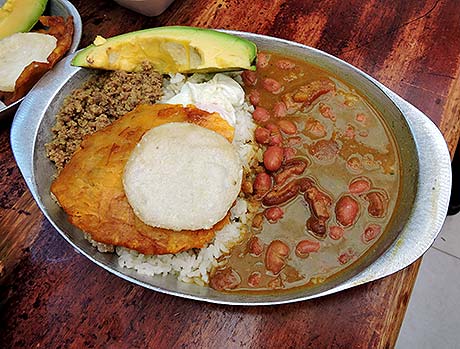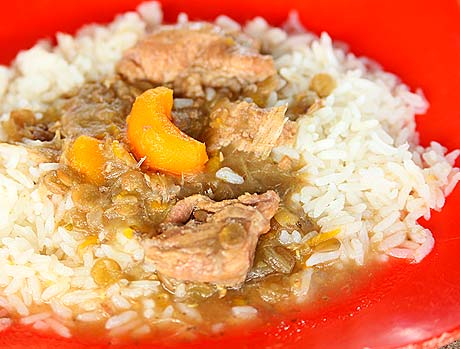
Climate variability threatens one of Latin America's most important crops and with it the food security and culinary heritage of the world's largest food-producing region.
In the very early hours of the morning, when the community is still asleep, Juana is already in action. It is three in the morning and her gastronomic corner, the Kiosco Luís Elián, is getting ready to open its doors. Soft music fills the air as she concentrates on her culinary work. At 5:00 AM, customers begin to arrive in search of a warm and comforting breakfast.
By lunchtime, a line has formed with people waiting for Juana's cooking. The menu of the day offers a variety of options, from stewed chicken to fried ripe plantains. But it is the rice soup that attracts everyone's attention. It is the star dish, a simple but satisfying combination that promises to keep stomachs full for hours. In this corner of Panama, as in the entire country, rice is an essential component of daily life.
Thousands of miles away, in Santa Cruz de la Sierra in Bolivia, a similar scene occurs every morning. There, Dorys Peña runs a small food stall known locally for the preparation of majadito batido or graneado passed down from generation to generation.
Like her Panamanian colleague, Dorys learned the amounts of ingredients and cooking times when she was a child. Her secret is to diversify the use of rice. Whether as a majadito graneado (toasted rice) or majadito batido, which is not grained and is seasoned with a spoonful of urucu, which adds a saffron-like color, her preparations include onion, paprika, pepper, cumin and shredded charque (dehydrated beef), and are complemented with eggs, plantains and served with boiled yuca.
Juana, on the other hand, prepares the soup with a smaller amount of seasoning, but the result is just as effective. She mixes the rice with meat and vegetables to submerge it in a fragrant broth which gives it an unmistakable homemade flavor. She modestly says, "Today it didn't turn out so well.” But one of her diners is quick to contradict her. "Please give me a little more rice.”
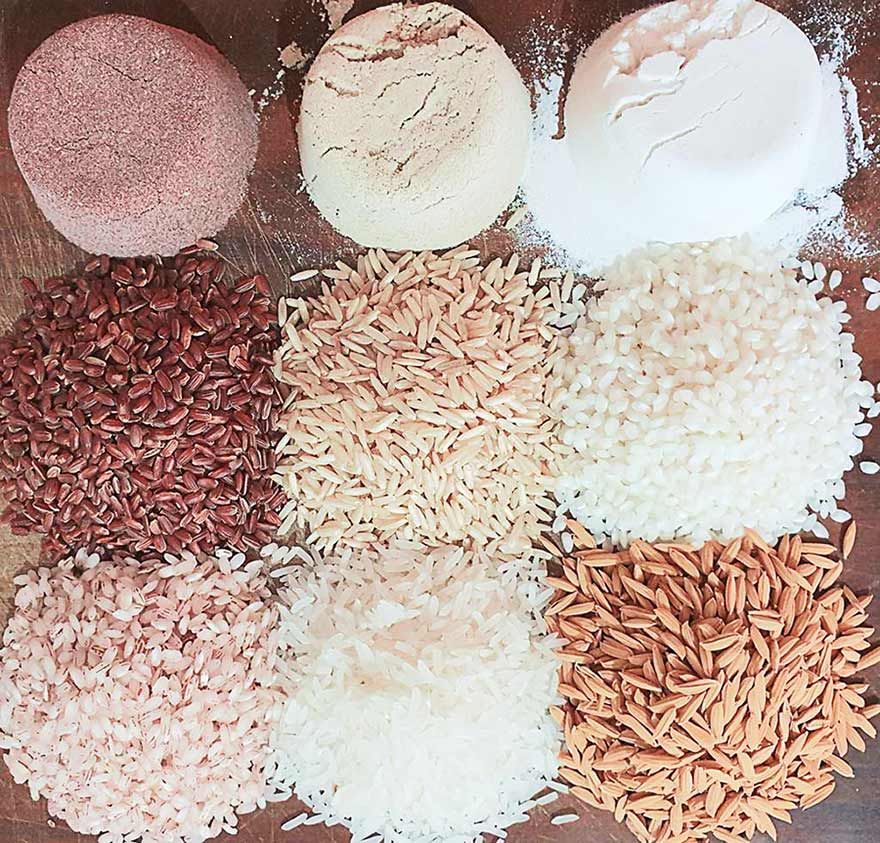 Types of rice grains produced in Santa Cruz de la Sierra, Bolivia. Image courtesy of CIAT via Juana Viruez.
Types of rice grains produced in Santa Cruz de la Sierra, Bolivia. Image courtesy of CIAT via Juana Viruez.
Certainly, rice represents a bond with tradition and culture that is shared in almost all of Latin America and the Caribbean. According to data provided by the Regional Fund for Agricultural Technology (FONTAGRO), it is the fourth most consumed food in the region and contributes on average 11% to the per capita caloric intake in Latin American countries. Panama and Bolivia are worthy representatives of this abundance which, despite the indispensable role of rice in many recipes, could face various risks in the not-too-distant future.
Food security and climate change
In Latin America, rice was a pioneer crop in the early part of the 20th century, when upland rice varieties, both traditional and improved, were adapted to the acidic soils of tropical savannas, valleys and areas neighboring tropical forests. Since then, rice has gradually become a staple food in the diet of consumers in the region. According to the study New Challenges and Great Technological Opportunities for Rice Systems by Luis Roberto Sanint, per capita consumption of white rice went from less than 22 pounds in the 1920s to nearly 66 pounds in the 1990s. By 2020, almost 60 pounds per capita was produced for human consumption, according to the Food and Agriculture Organization of the United Nations (FAO).
This increasing consumption makes it an indispensable food for regional food security, a vital ingredient in the health and well-being of a population that relies on the expectation that all people have, at all times, of access to sufficient, safe and nutritious food. In the case of Latin America and the Caribbean, this is crucial because despite being one of the world's main food-producing and exporting regions, it faces challenges in guaranteeing access to this food, as well as great vulnerability to climate change.
The report "State of Climate in Latin America and Caribbean 2021", issued by the World Meteorological Organization (WMO) revealed an alarming panorama of the consequences that climate variability can have on ecosystems, food security and water availability, as well as on the health of populations and the fight against poverty.
The research discusses how prolonged droughts, intense precipitation events, heat waves both on land and at sea, and melting glaciers are severely affecting Latin America and the Caribbean, from the Amazon to the Andes and from the waters of the Pacific to the Atlantic, including the remote snowy areas of Patagonia.
Less rice?
Despite the evidence of climate change, we tend to think that the increase in global temperatures will only affect distant places such as the poles, where glaciers are melting, or thick jungles and tropical forests that seem distant from our daily lives. However, the consequences of pollutant emissions on the climate are reflected in such basic aspects as our daily food.
An emblematic example in Bolivia is rice, which is the base of Majadito, an ancestral dish rooted in culinary traditions whose name means "beaten" and was influenced by Spanish paella. Today, however, it faces the effects of rising temperatures in the Santa Cruz region where the dish originated.
In only four decades, while the global temperature has increased by 0.6 °C, in Santa Cruz it has risen from 24.7 °C to 25.8 °C. This phenomenon is accelerating, with an average temperature increase of 0.3 to 0.4 °C every decade. Experts, such as Gonzalo Colque of Terra Foundation, warn that, in the worst scenario, the region could experience an increase of 3.2 °C by 2060.
In this scenario, the consequences would be dramatic, as we would go from having three days a year with temperatures above 40 °C to a number that could range between 14 and 29. This represents a historic break from the climate patterns of the last 40 years (1981-2020), according to José Luis Eyzaguirre, a member of the Terra Foundation research team.
But the problem is not limited to a rise in temperature. The region is experiencing a 27% decrease in rainfall compared to four decades ago. This trend has resulted in extreme weather events, from flash floods caused by heavy rains to prolonged droughts due to lack of precipitation.
One of the most evident and immediate consequences is the so-called intra-regional displacement that has to do with the productive reconversion of the land. In Bolivia’s department of Santa Cruz, there is a displacement of rice production toward the north in the provinces of Ichilo-Yapacaní and Sara.
According to studies by FAN-Bolivia, the Mapbiomas Bolivia analysis shows that in 1985 the area destined for agricultural use was 6.9 million acres, while by 2021 that figure increased to almost 27 million acres – a 291% increase in land use for agricultural and livestock activities which will have an impact on the climate and production.
This displacement is linked to processes of degradation of arable land with increasingly lower yields. "Many national and foreign producers, large, medium and small, continue to look for other lands with greater productive potential," says Joel Richard Valdez, project coordinator of the Fundación Socioambiental Semilla.
Producers with the National Agricultural Cooperative Federation (FENCA) say that due to climate change, it now rains less and there is less humidity in the older production areas, another reason for the displacement of rice production. Compounding the problem is the indebtedness of producers and the lack of technological innovation, which together complicate rice production in Bolivia, according to Juana Torrez of the Centro de Investigación Agrícola Tropical (Tropical Agricultural Research Center).
A snake eating its own tail
This phenomenon could be disastrous in Panama given the high consumption of rice, which amounts annually to about 154 pounds per person, positioning the country as one of the main consumers worldwide. In Panama, rice is not only part of the country's most traditional dishes but is also present in recipes such as sushi and Chinese food, which are very popular among consumers in the country. The preference for the cereal is even reflected in beverages and desserts, such as rice pudding or rice with pineapple smoothie.
Despite the fact that rice is cultivated throughout the year, in times of drought -- especially between January and March and from mid-July to mid-August -- the country is forced to resort to imports to satisfy domestic demand. This year alone, in anticipation of high demand, the import of two million quintals of rice was authorized at the end of January 2023, preventing shortages and a possible escalation in prices. But this could be just the beginning of a bigger problem because, according to studies by the Economic Commission for Latin America and the Caribbean (ECLAC), corn and beans in Central America also face significant risks due to climate change. In a scenario of rising emissions and global inaction, estimated yield reductions could reach 35% for corn, 43% for beans and a staggering 50% for rice by the end of the century.
The International Rice Research Institute warns that rice production is at risk due to extreme weather events such as droughts, floods and extreme temperatures and, simultaneously, that the livelihoods of millions of small farmers are at risk.
This generates a paradoxical situation in which agricultural practices resemble a snake eating its own tail. While flooding rice fields and open crop straw burning are entrenched and indispensable practices in rice production, they are also responsible for a notable adverse effect: the release of methane, a very powerful greenhouse gas. As a result, what should be a source of livelihood becomes a destructive cycle in which rice production contributes to its own threat.
The traditional locro carretero
Climate change not only threatens the production of large quantities of food, such as rice, but also puts at risk the culinary heritage of nations reflected in subtle and local flavors. Such is the case of locro carretero or locro de gallina, a rice-based dish whose origins are deeply rooted in Bolivia's history, as its name reflects its beginnings in the caravans that crossed the vast plains of the departments of Santa Cruz, Beni and Pando since the 17th century, when it was already an essential food for travelers on long and challenging journeys.
The dish is prepared in a simple way, combining rice, chicken, onions, carrots, peppers, and potatoes in a pot of water, which is then cooked for about 20 minutes before oregano is added and served with boiled yuca. Its importance lies in its role as an unwavering companion in arduous journeys, crossing jungles, plains, rivers and swamps.
With time and the integration of Santa Cruz in the country, the locro carretero has evolved, incorporating ingredients such as potatoes, onions, chicken, urucu to add color ranging from yellow to deep orange, and cooking oil to enhance its flavor.
Then there’s the rice bread that stands as a symbol rooted in the gastronomic culture of Bolivia. Although its origin remains in the shadows of history, its flavor is unquestionably appreciated and its presence at the table is a constant in the daily lives of many people. This baked product has become an indispensable accompaniment to a cup of coffee or to refreshing drinks such as mocochinchi or chicha. The traditional recipe for rice bread combines local ingredients such as yuca, cheese and, of course, rice. Cooking it is a ritual that involves cooking and grinding the yuca, mixing it with butter, sugar, salt and cheese and then baking it wrapped in banana leaves.
Through conversations with Dina Sánchez Urgel, an expert in the preparation of this delicacy in The Cabañas on the banks of the Piraí, we dive into the history of a dish that not only fills us with energy but also sustains many families. From those who plant the rice to those who milk the cows and prepare this dish with their own hands, rice bread represents a chain of production that has endured from generation to generation.
Ricardo Cortez, a Santa Cruz chef and social communicator, stresses the importance of preserving culinary traditions by combining the traditional and the modern. Aware of the threat of climate change to food production, Cortez insists that knowing the history and origin of dishes is essential to keeping the authenticity of gastronomy alive and to ensuring an equitable diffusion of technologies and financial resources to protect gastronomic heritage and prevent the disappearance of the food traditions of nations.
Panamanian sancocho
In Panama, the risks associated with weather will affect the sancocho, the country’s most emblematic soup, which has a flavor that instantly conjures up images of chicken seasoned with oregano and a variety of root vegetables to suit the cook's taste. This soup, a delicious reminiscence of home, is a source of unparalleled comfort. But one of its key ingredients, yams, is experiencing a decline in production.
In Panama, yams occupy an important place in culinary preference, particularly ñame baboso (slimy yam), which is popular for giving a creamy consistency to soups and enhancing their flavor. Unfortunately, this variety of yam is threatened by a disease known as anthracnose, caused by the fungus Colletotrichum gloeosporioides, to which the slimy yam is highly susceptible.
The causes have to do with ambitious production systems that lead to a lack of diversity in conventional agricultural soils, due to the excessive use of chemicals and machinery. In addition, increased humidity, caused in part by climate change, has contributed to the spore outbreak of this fungus, exacerbating the challenge faced by producers and threatening the preservation of slimy yams.
As a result, farmers have been forced to produce diamond yam, a variety that is resistant to the pathogen, but which doesn’t have the same texture and flavor.
Another example of a fading favorite in Panama is the cashew nut (Anacardium occidentale). This pseudofruit, known for its juicy flesh and characteristic aroma, has been used in a variety of preparations, from drinks to sweets and jams. Although the cashew is famous for its coveted seeds, which are in high demand worldwide due to their nutritional properties, it has also played a key role in baking and the production of vegan cheeses, an important element in the country's diet.
Unfortunately, its production has been severely affected by pathogens that proliferate due to climate change. In Panama, several pathogens affect both the tree and its fruits and as a result, cashew production has experienced a significant decline in recent years.
Endangered foods
These local examples of threatened foods and flavors are just a small sample of a catastrophic panorama for flavors and aromas that humanity has cultivated and appreciated for centuries. In the book, Eating to Extinction, BBC journalist Dan Saladino, discusses how monoculture is standardizing humanity's flavors, reducing diversity and narrowing our culinary culture and sensory experiences.
The book addresses the loss of biodiversity, from oranges on the slopes of the Etna volcano in Italy, creole cocoa in Venezuela, red rice in China and corn in the mountains of Oaxaca, exposing various global phenomena that are literally killing the diversity on our tables. "The problem is that we are all having the same experience globally, eating the same kind of sushi or avocado, the same way we wear the same fashion. We eat, for example, only one type of banana, Cavendish, even though there are 2,000 varieties of bananas," writes Saladino.
Differentiated responsibility and climate justice
Climate change is intricately intertwined with the social, environmental and economic determinants that affect the health and well-being of the population. The World Meteorological Organization (WMO) report highlights the profound repercussions of this phenomenon in Latin America and the Caribbean, from the alteration of ecosystems to the threat to food and water security, people's health, and the fight against poverty. It also states that climate change affects all dimensions of food and nutrition security in the region, including food availability, access, utilization, and stability.
This situation presents a worrying paradox because, although countries such as Panama and Bolivia contribute only modestly to global greenhouse gas emissions, they are exceptionally vulnerable to the impacts of climate variation and rising temperatures. Extreme weather events, such as rising sea levels in Panama and El Niño in Bolivia, are already threatening food security and causing population displacement. "We are facing a drought that has not been seen in recent times. This has to make all the inhabitants of Bolivia aware, at all levels of the government, so that we start working on projects to recover water, on prospecting projects, on projects to take care of our forests, our aquifers and our rivers," said José Luis Farah, President of Bolivia's Eastern Agricultural Chamber (CAO).
At present, 290 of Bolivia's 340 municipalities are in state of emergency due to water scarcity, which will directly affect rice production and therefore the population.
Climate justice and common but differentiated responsibility become essential issues in this context. This concept refers to the principle that countries have different and distinct responsibilities based on their historical levels of greenhouse gas emissions and their economic capacity to address the challenges of climate change while recognizing that not all countries have contributed in the same way to the current problem of climate change and therefore should not share the same burden or responsibility for solving it. Panama and Bolivia and the entire Latin American and Caribbean region must act to mitigate the effects of the environmental crisis while industrialized nations must assume their historical responsibility and act decisively to mitigate climate change.
The loss of key ingredients for regional dishes is not just a gastronomic issue. It is a symptom of a larger problem that affects the economy, food security and social stability in the region. The need for stronger measures at both national and local levels is imperative. As the environmental and food journalist Raquel Villanueva states, "the preservation of culinary diversity and the protection of vulnerable communities are challenges that require a global commitment and decisive action at all levels of society.”
























